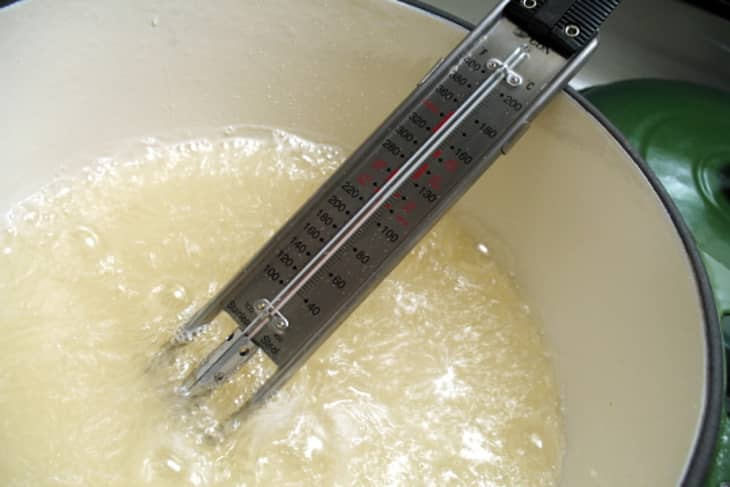Candy-Making Basics: How to Work with Sugar
As we mentioned in our post on crystallized sugar syrup, candy-making is a brand new culinary adventure for us. We’re teaching ourselves the basics and look forward to sharing our triumphs and pitfalls with you. We certainly hope you’ll chime in with advice and questions! First up, we have some basic tips for working with sugar…
Dealing with sugar and all it’s quirks is pretty much par for the course when it comes to making candy. The thing to remember is that sugar always wants to re-crystallize and will do so at the least provocation.
The tips below will help avoid a mess of crystallized sugar when you’re melting sugar into a syrup:
• Use the right sized pot. Whatever the amount of syrup you’re making, you want the initial sugar and water mixture to come about halfway up the sides of the pot. If it’s too small, cooking sugar takes forever and you risk it boiling over. Use too large a pot and the sugar will cook so quickly that you’re likely to overcook it.
• Medium to high heat is ideal for boiling sugar. Again, too low and it takes forever; too high and it cooks too quickly.
• Combine your sugar and water off the heat, and stir it just until the sugar is evenly moistened.
• Avoid stirring the sugar if at all possible once you put it on the stove. Agitation can cause the sugar to crystallize.
• If you have to stir it, use a clean stainless steel spoon. If you use the same spoon, the temperature difference between the residual sugar on the spoon and the boiling sugar can cause it to crystallize. Also, spoons made from other materials like wood or plastic could have foreign particles or residual fats on their surface that could (you guessed it) cause the sugar to crystallize.
• Use a pastry brush dipped in water to wipe down the sides of the pot during the first few minutes of cooking. If the sugar mixture sloshed onto the sides of the pot, you’ll want to wipe down the spatter. The best way to do this is by dipping a pastry brush in a little water and running it lightly around the interior of the pan just above the sugar-line. The water won’t cause the sugar to crystallize.
• Use an interfering agent to prevent crystallization. Interfering agents are usually acids like lemon juice, vinegar, or cream of tartar. These interrupt the binding process of the sugar crystals and help prevent crystallization. Just a teaspoon or two should do the trick.
• Watch the pot of boiling sugar like a hawk. Sugar can be slow to get going, but once it reaches a full boil, it can move swiftly through the stages. A candy thermometer helps you keep an eye on how fast the temperature is rising. Until we feel more comfortable recognizing the stages of sugar, we’ll try to resist our usual multi-tasking tendencies and stay close to the stove!
We’ll talk about how to recognize these stages and what we can do with the sugar at each stage in some of our future posts.
Until then, any extra words of advice for those of us just starting out with sugar? Or questions from fellow newbies?
Related: Technique: Caramelizing Sugar
(Image: Emma Christensen for the Kitchn)
